Do you know the difference between shedding and breakage? Although they may seem the same to you, and many have trouble differentiating them, they are not the same. I have touched on this subject briefly in a previous post while talking about “When To Trim Transitioning Hair?“, however, today I want to give you a clearer understanding of it.
To give you some initial perspective on this issue, I would like you to think of shedding as something completely normal that everyone experiences and breakage as the consequence of an underlying issue with your hair.
Shedding As A Normal Thing
Did you know that the normal person has around 100,000 hair follicles on their heads? Although this number varies between individuals, I was actually surprised to find out that blondes are 10% above this average and reds 10% below. It’s funny, but I always thought brunettes ruled the world on this one (cue in Beyonce’s “Who Runs The World” with a slight lyric change). Oh, well we can’t win them all! Moving on…
Picture your hair undergoing a repetitive cycle of growth and rest that has 3 different stages: the Anagen (active growth), Catagen (end of active growth) and the Telogen (resting). The interesting thing about this is that our hair doesn’t go through this stages all of it at the same time! For example, a section of hairs in our head can have all three stages happening at the same time otherwise, at some point, we would all be bald, right!? Picture that!!

Nevertheless, the Anagen stage which lasts 2 -3 year, encompasses around 85% of all hair. So when does our hair fall? Once this growth stage ends, we start experiencing the end of the active growth, the Catagen stage, which lasts 2 – 3 weeks and is then followed by the Telogen stage. This last phase of the hair cycle covers around 10% of all hairs at any time and can last 3 months.
It is in this resting stage that our hair begins to shed only to enter into the Anagen stage again. According to scientists, we experience on average a loss of 100 hairs and you will know that your hair is shedding when you see its root or white bulb still attached to it, just as pictured below.

So When Can Shedding Signal A Problem?
Although I have said that shedding is a normal thing to happen, there are instances where you will need to seek professional help if you notice excessive shedding. How much is excessive shedding? It will be different for everyone and only you will know as you regularly care for your hair, you will notice that it will be above the average for you.
There are many reasons why this could be happening such as hormonal changes like in postpartum, diet, stress, medication, illness or even scalp condition which is why you need to address this issue seriously without panic and see a doctor.
Hair Breakage
Now hair breakage, on the other hand, is an event that those with natural, curly hair can experience quite frequently. This is so because our hair is inherently dry and the natural oils in our scalp have difficulty travelling along the curly shape of our hair. Consequently, as you may know by now, dry hair becomes brittle hair, and brittle hair leads to breakage (tired of listening to this drill too? Yeah, me too. But this is the sad truth for us curlies).
However, this can be avoided to a minimum if the hair is properly moisturised, as some breakage will be normal. Breakage can happen as a result of under moisturised hair, tight hairstyles (any), use of heat, chemical processes on the hair, over manipulation, illness, medication or the environment (high/low temperatures and the wind). You will notice your hair is breaking when you see broken pieces of hair, normally much shorter than your hair length, that have no white bulb attached to it. Instead, the hair will have split ends and/or single strand knots, just as pictures below.

I know guys, I know. Trust me I know! Everywhere we turn it seems like more bad news for us. It surely puts a gloomy sky on our transitioning path, and it seems we can’t escape it. Some of the factors contributing to breakage are out of our control such as hair shape, illness, medication and the environment. In a way, it’s true we can’t escape it. However, you can’t give up so early in the journey, trust me when I tell you that our curls are worth fighting for. You can control damage to a minimum if you provide your hair with proper moisture and nourishment by creating a hair regimen that facilitates this.
Final Thoughts & Task
I hope you now know the difference between shedding and breakage. Knowing the difference between the two will allow you to act accordingly. Don’t go freaking out if you shed 100 hairs a day, apparently, it’s normal (go figure!). It’s only when it’s excessive that you need to check it out.
Conversely, breakage is telling you that you need to inspect your hair routine and see where the root the problem is (oh wait did you see what I did there?! Inspect, root of the problem. Get it! Look for it because it’s not there it’s actually broken? Please tell me you got it and I’m not really bad at making jokes.). Anyway, I have a little task for you to do.
The next time you do your pre-poo or re-moisturise your hair and some hair fall, or you find some hairs on the floor pick them up and have a closer look at them. See if you know which one is which. If you have more than 10 pieces of broken hair you might have a problem. Why, because that will be the amount of breakage you see when you’re looking for it. Imagine what happens when you’re not looking?
If you’re having trouble controlling hair breakage and don’t know where to start or what to do you might want to take the 5 steps necessary to control it. All you need to do is print the worksheet guide with actionable tasks pictured bellow, and you’ll be able to identify the problem and correct it. Click on the link below to read The Ultimate 5 Step Guide To Natural Hair Breakage Control and print your worksheet. Happy homework!
Are you able to distinguish between shedding and breakage now? Have you suffered from any of them? What did you do?

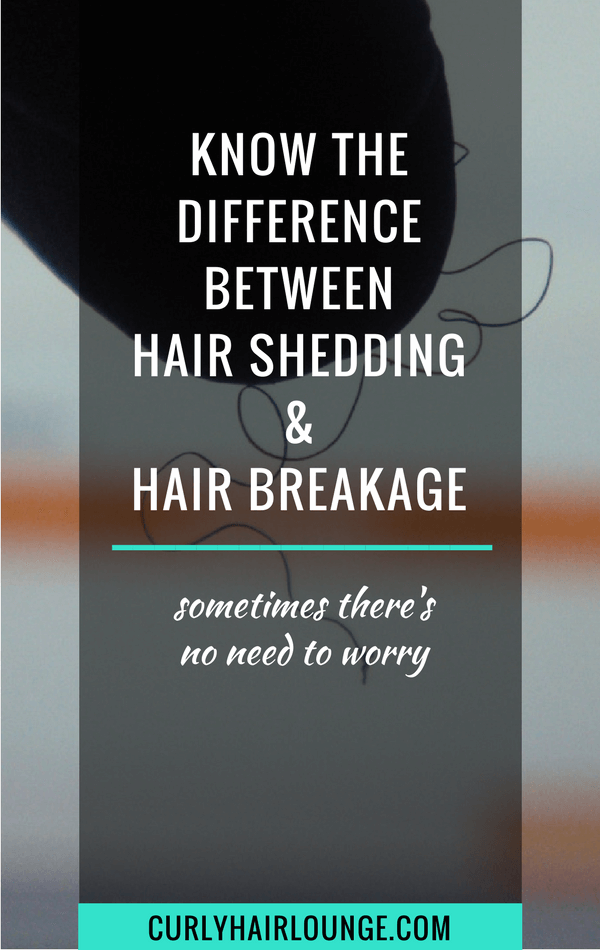

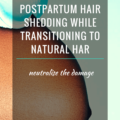
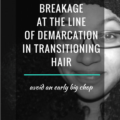
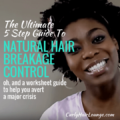
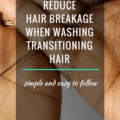
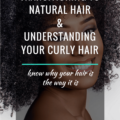
14 thoughts on “Know The Difference Between Hair Shedding And Hair Breakage”
Thanks for the clarification. I found that I have more breakage than shedding. I am going to start using more moisturizer – recently bought a 100% coconut oil – and use softer hair bands as you suggested in the previous post. I might even trimmed of the split ends – just to give it a good start 🙂
Hi Cathy, coconut oil is amazing in providing strength and elasticity to your hair, is also prevents moisture and protein loss (which is great if you use heat or dye your hair). Use it to do a pre-poo and you will notice a difference read more in this post. You can also apply it lightly after you apply a leave-in, it won’t grease your hair as it is a penetrating oil. Remember to re-hydrate your hair whenever it feels or looks dry, simply spray some water and apply your coconut oil or grapeseed oil. Hope this helps you. 🙂
Hi Monica, I just want to say first off I really like your site, Wow, I was shocked in how detailed your article is very informative for sure, my hair is rather thin to begin with, but being a mother of 4 I am constantly losing hair each and every day, as well tons of split ends but I’ve tried many different shampoo’s & conditioners with no results. But I recently started trying to ween off all of those chemicals in my body care, I was wondering if you knew of a natural way of treating my hair to help with my split ends and breakage as well hair loss..
Thank you Jennifer! I’m really happy that you like the website and I hope to see you here more often.
I totally understand you, I have two kids and I feel I had much more hair a few years back, not to talk about the gray ones that are crepping in :). As for the hair loss it can be due to diet, stress and many other things but you can try a tea rinse, read this post as many of the suggestions here are good for hair loss.
Split ends and breakage can be the result of a few things such as insufficient moisture, chemical treatments or heating tools. Try to avoid shampoos with sulphates and do a pre-poo before washing your hair (read this post). Afterwards, if your hair is straight apply a leave-in and a moisturising cream or a light oil to seal the moisture. If your hair is curly you can try the LOC method. However, before you do anything maybe you should give your ends a little trim. Hope this helps!
Hi Monica, This is sooooo on topic for me. A few years after turning 40 I noticed my hair changing in weird ways. It was always fine and straight then it began to show curls on the ends and seemed to be thinning and FUZZY. I never liked my hair before 40 and now it’s even worse. Thanks to you article I can start working on what is problematic. Hey, I see the product WEN claims to help with fuzzy hair. Any thoughts?
Thanks,
Deborah
Hi Deborah,
Thinning of the hair is something that is normal with age and at the ends of the hair for those who have long hair as it has “lived” the longest and has been more exposed to many elements. I never tried products by WEN, but I see they have a cleansing conditioner without harsh detergents or sulphates which is always good for your hair. When you talk about fuzzy do you mean frizzy? Frizzy hair means dry hair, it needs some moisture, you shouldn’t comb it dry or manipulate once you style your hair, you can use a light oil (jojoba oil) once you finish styling to seal moisture and avoid quick evaporation. One thing I like to do, that is quick and easy, is to put a bit of my conditioner on wet hands, rub it and apply on my frizzy areas. Hope this helps.
Monica, Thanks for clarifying the difference between shedding and breakage. I’m happy you pointed out the different factors that can contribute to both. Based on your article I can confidently say I experience mostly shedding and have noticed more as I age but nothing to be concerned about. My hair doesn’t really break but I think factors like a healthy diet, using natural hair products, not over washing, and not using heat must be having a positive effect 🙂
Hi Jess, you’re right there are many factors affecting shedding and breakage and I’m glad your taking good steps to a healthy hair :).
This is a great read! I found it very helpful and informative. I have curly hair and seem to be shedding all the time. I was never worried (and still am not), but it might be good to look into why I loose so much hair after each shower. Thanks for sharing this!
Hi Angel, your shedding might not be something to worry about. Maybe you don’t manipulate your hair during the week and when you wash it, is sheds what it would normally shed during the week. Maybe it’s stress related, but if you feel you need to see a doctor do it. All the best.
Great clarification. I don’t know a whole lot about hair, but I’ve recently started doing mine more and more as I’ve gotten older and I’m trying to learn as much as I can. I never knew there was much of a difference so it’s nice to know this little tidbit. 🙂
Hi Steph, it’s nice that you got some clarification just by reading this post. There is plenty of information even for those you don’t have natural curly hair. Thanks for stopping by!
I am glad I found your website I want to dye my hair and I didn’t know how to do it.Thank you.
Thank you, Elnora!